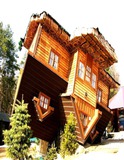| dc.rights.license | http://creativecommons.org/licenses/by-nc-sa/3.0/ve/ | |
| dc.contributor.author | Sifuentes C., Adalgisa | |
| dc.contributor.author | Ojeda de Ilija, Raiza | |
| dc.date.accessioned | 2013-02-07T14:16:04Z | |
| dc.date.available | 2013-02-07T14:16:04Z | |
| dc.date.issued | 2010-12-31 | |
| dc.identifier.issn | 1856-1276 | |
| dc.identifier.uri | http://www.saber.ula.ve/handle/123456789/36563 | |
| dc.description.abstract | La presente investigación pretende hacer un análisis de los principales
aspectos del concepto de paradigma (y el de anomalía) de Thomas Kuhn, a
través de sus principales obras, y sus primordiales críticos, cotejando la validez
de los Paradigmas de Kuhn así como extraer algunas consecuencias no sólo
para la historia de la ciencia sino la de la estética. Kuhn concluye, por ejemplo,
su obra “La Tensión Esencial”, con una serie de comentarios relativos a las
relaciones entre la ciencia y el arte, acotando cómo ambos entornos,
ignorantes el uno del otro, representan un binomio más, tan complejo como
los que han dado tanto de qué hablar en el plano filosófico, sociológico e
histórico, lo mismo en dirección de la ciencia que en del arte, por separado, y
en ambos sentidos simultáneamente. | es_VE |
| dc.language.iso | es | es_VE |
| dc.publisher | SABER-ULA | es_VE |
| dc.rights | info:eu-repo/semantics/openAccess | |
| dc.subject | Epistemología | es_VE |
| dc.subject | Thomas Kunh | es_VE |
| dc.subject | Paradigma | es_VE |
| dc.subject | Estética | es_VE |
| dc.title | Algunas implicaciones estéticas de los paradigmas de Kuhn | es_VE |
| dc.type | info:eu-repo/semantics/article | |
| dc.description.abstract1 | This research aims to analyze the main aspects of the concept of
paradigm (and anomaly) of Thomas Kuhn, through his major works, and its
main critics, by collating the validity of Kuhn's paradigms and extract some
consequences not only for the history of science but of the aesthetic. Kuhn
concludes, for example, his book "The Essential Tension," with a number of
comments on relationship between science and art, limiting both
environments, ignorant of each other, represent another binomial, as complex
as who have given so much to talk about the philosophical part, sociological
and historical, the same in the direction of science than art, separately and in
both directions simultaneously. | es_VE |
| dc.description.colacion | 187-201 | es_VE |
| dc.description.email | ada@ula.ve | es_VE |
| dc.description.email | railija@ula.ve; raizaojeda@hotmail.com | es_VE |
| dc.description.frecuencia | semestral | |
| dc.identifier.depositolegal | 199702ME179 | |
| dc.publisher.pais | Venezuela | es_VE |
| dc.subject.centroinvestigacion | Centro de Investigaciones Estéticas (CIE) | |
| dc.subject.facultad | Facultad de Humanidades y Educación | es_VE |
| dc.subject.keywords | Epistemology | es_VE |
| dc.subject.keywords | Thomas Kunh | es_VE |
| dc.subject.keywords | Paradigm | es_VE |
| dc.subject.keywords | Aesthetic | es_VE |
| dc.subject.seccion | Revista Estética: Estética, filosofía de la historia, filosofía de la ciencia e historia de la filosofía | es_VE |
| dc.subject.thematiccategory | Artes y Humanidades | es_VE |
| dc.subject.tipo | Revistas | es_VE |
| dc.type.media | Texto | es_VE |


